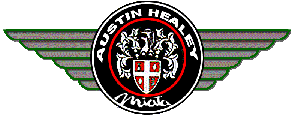
The Mite
Power Train Set-Up Guide
By Greg Frick of Inland Empire Driveline Service
Originally published in StreetScene magazine, December 1997
Reprinted from StreetScene magazine
Having a little information at the beginning of your street rod project can make setting up power train angles one of the simplest steps in the building process. Not having, or ignoring this information can turn your dream car into a nightmare.
Here is what you need to know. The center line of the crankshaft and transmission output shaft must be parallel to the center line of the pinion shaft as shown in Figure 1. You will note that there is some distance between these parallel lines. The distance is caused by the angle of the components and their distance apart.

Planning these component angles is critical. Your task is to set the components
up so their center lines are parallel and so that the angle made THROUGH the
U-joints is 3-degrees or less as shown in Figure 2. While it is possible to
run at zero degrees through the U-joints, something more than actual zero
and less than three degrees seems to run smoothest.

It will be worth the effort to set the engine and transmission in the frame
and the axle under it to experiment. Fairly reliable angles can be measured
from the starter motor case and of the pinion yoke. A piece of 2x4 (wood)
can be cut to length to simulate the drive shaft for measuring its angle and
to check for interference (or contact) with other chassis and body components.
When you are satisfied that you have the proper angles in place you can mount
the components. You will be married to the engine and transmission placement
but must plan for adjustability at the rear axle.
When the car is finished, recheck the pinion angle. If the body weight has changed the pinion angle, correct it. Leaf spring cars will need axle angle shims for adjustment. These are available at front end alignment shops or their suppliers. Now go for a ride. An angle induced vibration will be high frequency, twice engine RPM in direct drive. It may show up only on acceleration or deceleration. Adjust the pinion down to correct acceleration and up to correct deceleration vibrations, plus or minus one degree is usually enough. Before adjusting anything, make sure the U-bolts holding the driveshaft to the pinion yoke are not overtightened. Correct torque is 17 foot pounds and no more.
In following this set up routine you may find parts of the car where the drive shaft should go. While this may require some redesign, it is better to learn this before the car is complete and is difficult to correct.